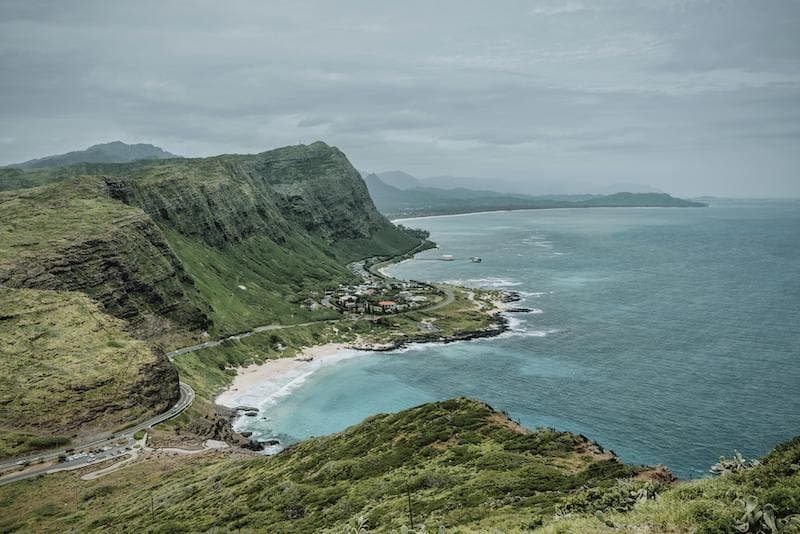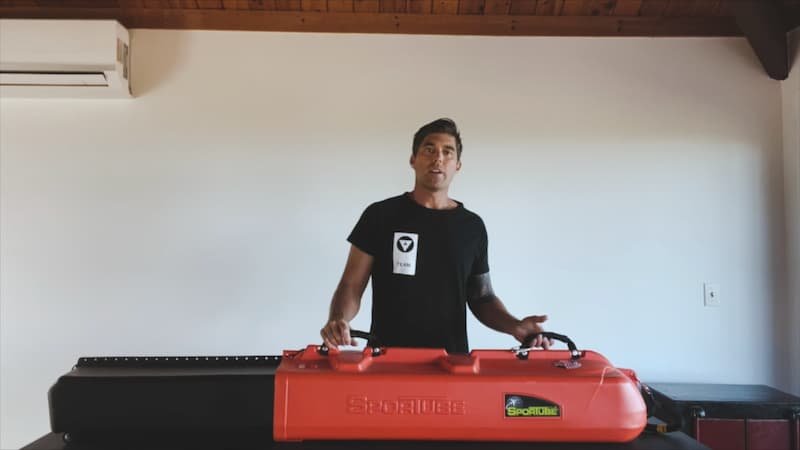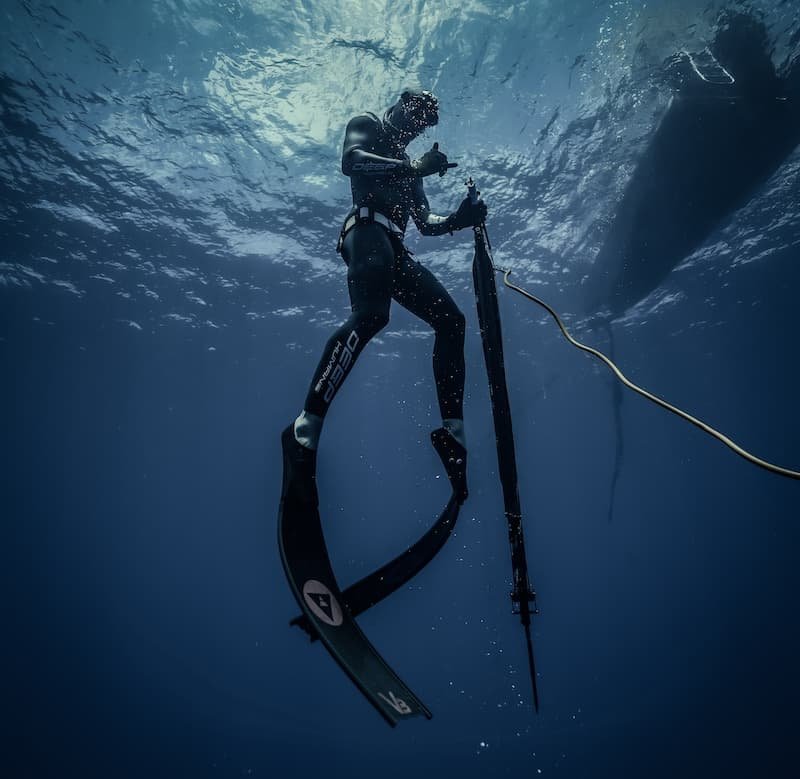Today, our focus will be on the essential aspect of traveling overseas with spearfishing gear. This holds significant importance because, as you embark on a journey spanning 4,000 miles, investing between 5k to 10k, along with your time and energy, the planning of spearfishing expeditions becomes a crucial consideration. Whether pondering these adventures months or even years in advance, having explored numerous locations, particularly in the Pacific's island chains like Hawaii, Tahiti, and Fiji, it becomes evident that these remote areas can either enhance or jeopardize your trip depending on your level of preparedness.
To begin with, I'd like to discuss the initial steps before delving into packing and preparing for your journey. Before the actual process of organizing your luggage and gearing up for the trip, I strongly advise undertaking a few essential tasks. Firstly, connect with the airline – make a call, engage in conversations with fellow travelers on Instagram, and seek insights from team members who have experience in similar ventures. Numerous individuals are usually willing to share valuable information about their travel essentials, past destinations, and challenges encountered with various airlines. It's crucial to conduct thorough research.
When I initiated this journey, I invested considerable hours conversing with airline representatives and fellow travelers to identify potential hurdles that could jeopardize or inflate the costs of my trip. Through these experiences, I've compiled key components to consider. The foremost factor involves examining the luggage requirements set by different providers and airlines.
Traveling from Hawaii, which is inherently remote, presents unique challenges with limited airline options. A select few airlines connect us to mainland areas, and even our international airport has restrictions. The luggage weight restriction is a significant concern, necessitating an inquiry into the maximum weight allowed for both check-in and carry-on bags. Some destinations may require alternative cargo providers due to weight constraints.

For those, like myself, not transporting an extensive load of spearfishing gear, cameras, and additional equipment, the weight restriction remains a critical factor. I opt for a minimal setup, carrying only a couple of GoPros and a drone. However, individuals with more extensive equipment face additional challenges. The content they create may be exceptional, but the logistics of transporting spearfishing gear, cameras, and other items are undoubtedly complex.
Consideration of weight restrictions extends to both check-in and carry-on baggage. Main flights often offer more leniency compared to remote connector flights. In destinations like French Polynesia, where connector flights to extremely remote areas may have a limit as low as 25 kilograms, early arrival becomes crucial. Understanding the specific time frame for luggage check-in is vital. I recommend arriving at the earliest possible time, even a day in advance if feasible, as these flights are often utilized by locals transporting goods to remote islands.
To avoid potential complications, arriving early ensures your luggage is among the first to be checked in, especially when dealing with flights that operate once a week. Locals often use these flights to transport household goods or other products to their family members on remote islands. Being among the first to check in increases the likelihood that your luggage will make it onto the plane and reach your destination simultaneously, preventing any disruption to your spearfishing expedition. This practice has proven effective in minimizing the risk of missing crucial flights and experiencing gear-related setbacks during international travel with spearfishing equipment.

Next, I'd like to emphasize another crucial aspect: ensuring you have all the essentials and then some. When venturing to extremely remote locations and investing substantial amounts, it's imperative not to find yourself stranded without a necessary item, settling for small reef fish instead of the impressive pelagics you aspire to shoot.
Allow me to elaborate on what I typically bring along. My preferred setup includes a standard sport tube and a backpack in most instances. I tend to avoid an additional check bag, particularly when traveling to tropical destinations, where board shorts and flip-flops are the norm. However, in colder climates, dipping into the 70s, I make exceptions, packing a jacket and some warm attire.
Maintaining a lightweight approach is my preference. I've calculated that my sport tube, with all the equipment showcased here, falls within the acceptable weight limit, approximately 30 kilos. This aligns with the allowances of most airlines for mainland flights and Pacific island chains. Should I need to reduce weight for connector flights, a simple solution involves transferring my rigging bag, weight belt, and two floats into my backpack, bringing the total down to around 20-22 kilos.

Now, let me delve into the specifics of what I pack. I consistently carry two sets of carbon fins, having encountered instances where one was lost or damaged. Two spearguns—165 and 135—both rollers, provide versatility for hunting a wide range of marine life. Four shafts, two per gun, complete with cable and spectra, ensure I'm equipped for the potential challenges of shark-infested waters and sharp reefs.
I also bring two masks, strategically stored in their original housing to prevent breakage during transit. Essential accessories include a 100ft float line, a 50ft bungee, and my trusty flasher rig. To adapt to varying water temperatures, I pack two wetsuits—3mm and 5mm—and mix and match as needed. Additionally, I carry a selection of spare parts, including extra rollers, vacuum-sealed bands, and tools in my rigging bag for on-the-go repairs.
Anticipating potential mishaps, I pack two sets of booties and gloves, two snorkels, and a spare lock for my sport tube to avoid any unexpected issues during the journey. Lastly, having a go-to bag for daily use on the boat is indispensable, preventing chaos and ensuring that everything stays organized and accessible throughout the expedition.

To commence the packing process, I consistently place my weight belt at the bottom of the sport tube, rolling up my towel and nestling it alongside for added cushioning. It's essential to pack the bottom section, allowing for a framed structure with approximately three and a half feet of packing space above. The tube should be positioned upright since laying it down won't accommodate all the gear effectively.
Following this, I position my go-to bag on top of the weight belt. The shafts are then carefully arranged in the far right back corner, with the larger gun, a 165, placed in the left section of the sport tube, shaft included for video demonstration purposes. The second gun is positioned toward the rear right side, creating a framework that facilitates middle packing.
Both sets of fins are inserted with the fin pockets facing down. To enhance rigidity and prevent movement between the fins, I secure them together using velcro straps with turnbuckles. The floats, separating the two sets of fins, are placed in the middle. On top of these, I add my two wetsuits, fortifying the structure further.

With the foundational items in place, I incorporate the float lines, rigging bag, and miscellaneous items like flashers. As the packing progresses, there should be ample room for personal items such as soap, shampoo, and other smaller belongings. To complete the packing, the top of the sport tube is securely placed over the contents, ensuring everything is snugly fitted.
It's crucial to double-check that the fins are tucked inside and not protruding, a task made easier by keeping the tube upright during the process. Finally, the lock is secured on top, acting as a safeguard for the gear. With this method, the packed sport tube weighs around 30 kilos, and once additional items like soap and miscellaneous gear are included, it typically totals around 32 to 34 kilos.